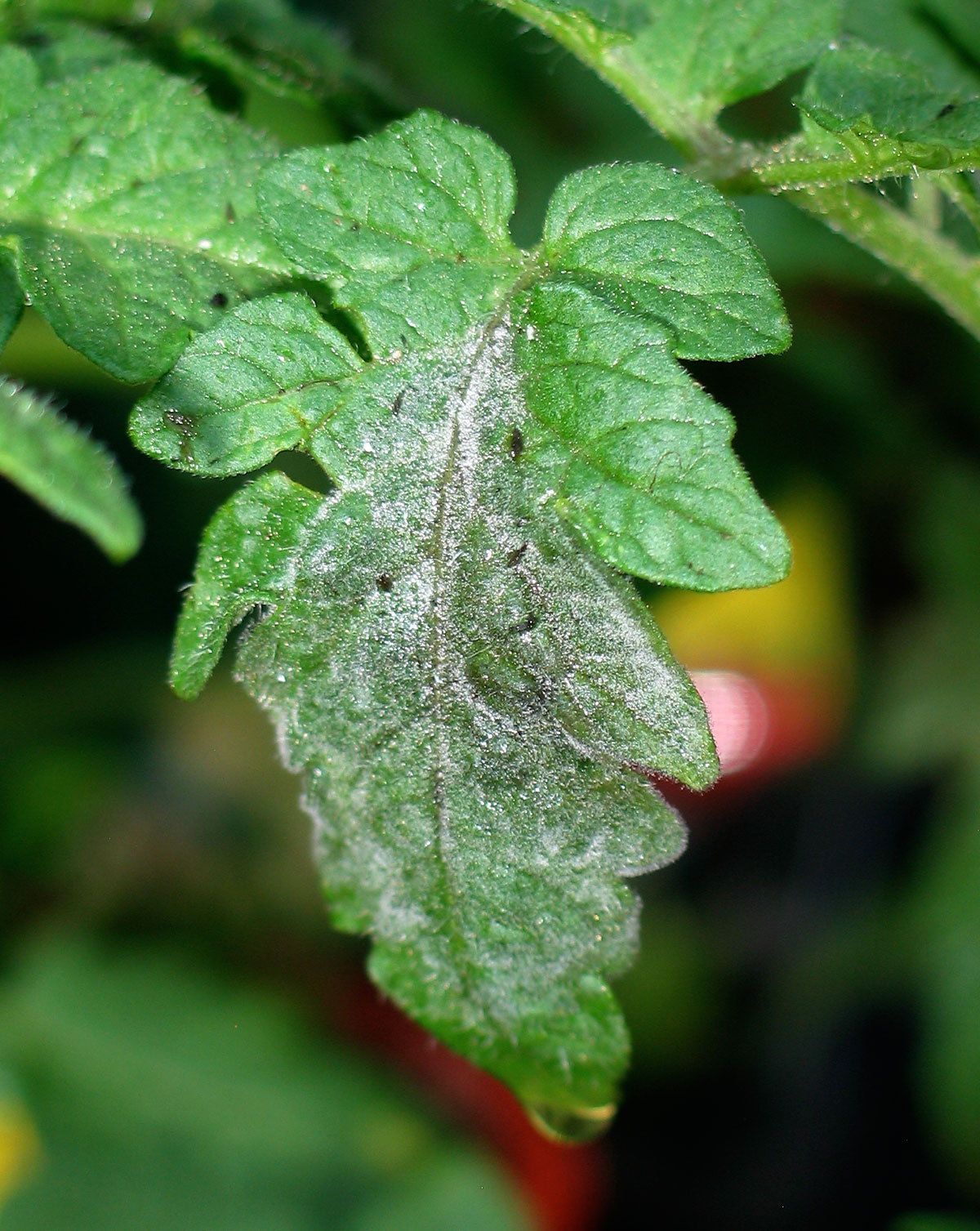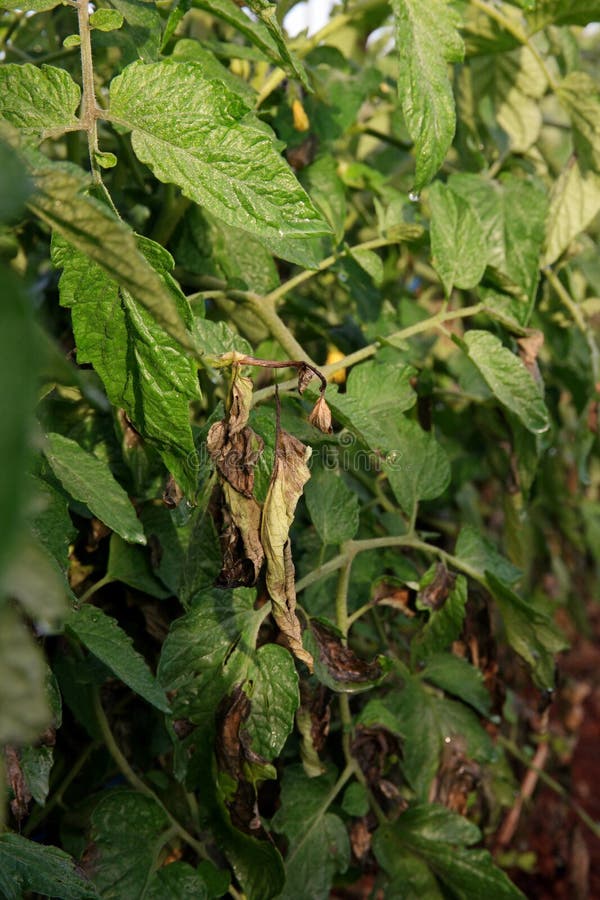


Phytophthora infestans needs cool (below 77 F), wet weather. Clouds protect spores being dispersed in wind from the killing effect of ultraviolet radiation. Sporangia from these southern areas are spread long distances bywind and wind-driven rain. In more southern regions, the pathogen produces long-lived sexual spores (Oospores) that survive in infected crop debris and the soil. The pathogen does not overwinter in tomato and is not seed-borne. infestans in the Northeast survives in potato tubers saved from last year for seed and in cull piles or soil that did not freeze during the winter. For photos and descriptions see Recognizing Tomato Blights. These include Fulvia leaf mold, early blight, Septoria leaf spot, and bacterial diseases. Not all 'leaf blights' of tomato and potato are late blight! Several common diseases of tomato and potato cause leaf symptoms that can easily be confused with late blight. Firm, brown spots develop on tomato fruit. Brown to blackish lesions also develop on upper stems. Sometimes the lesion border is yellow or has a water-soaked appearance. Classic symptoms are large (at least nickel-sized) olive-green to brown spots on leaves with slightly fuzzy white fungal growth on the underside when conditions have been humid (early morning or after rain). The most common symptoms on tomatoes are sunken, dark green or brown lesions on leaves and brown lesions on stems, with white fungal growth developing under moist conditions. Late blight is extremely destructive when not managed, quickly killing foliage and infecting fruit and tubers. The pathogen spreads easily on wind and rain and is capable of destroying entire fields in a few days. The pathogen caused widespread starvation and immigration during the Irish potato famine in the 1840s. Late blight, caused by the fungal-like organism Phytopthora infestans, is the most severe disease of potato and tomato.


 0 kommentar(er)
0 kommentar(er)
